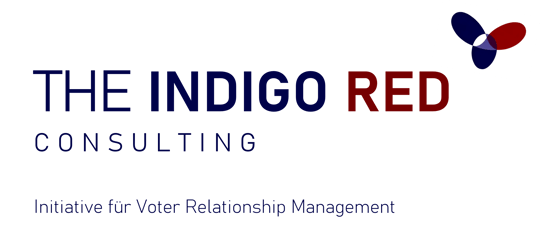Voter Relationship Design: The Next Level of Political Communication
Explore 'Voter Relationship Design': The revolution in political communication placing the voter at its core. Discover how modern marketing strategies from the business sector, inspired by insights into Homo Suffragator, are transforming the political landscape. Our unique approach, Voter Relationship Design, combines cutting-edge political science research with proven methods of direct marketing to redefine the relationship between political actors and citizens. With a strategic framework integrating identities, experiences, and personal attributes, we enhance political communication to be more effective and personalized. Join us on this journey and uncover how we strengthen democracy and revolutionize political participation through tailored voter experiences.
Pascal Rudolf
3 min read


It's the Experience, stupid!
In recent blog posts, we've highlighted how numerous methods of corporate marketing, based on appropriate value exchange, can successfully be integrated into political communication. These strategies, rooted in the Homo Suffragator model, emphasize the importance of identities, memories, and personalities in political decision-making (Bruter & Harrison 2020). Now, we shift our focus to the concrete implementation of direct marketing programs in the political sphere to strengthen voter engagement through crafted experiences.
Voter Experience Design - A Blueprint
Our method, Voter Relationship Design, combines current political science research with proven and innovative methods from direct marketing areas such as demand generation, CRM, loyalty management, and customer experience design. These approaches, developed by pioneers like Google, Apple, or Amazon, are adapted for the political context to redefine voter engagement.
Our approach distinguishes between strategic planning, program design, and tactical implementation to create a deep and sustainable connection between political actors and voters.
Target System and North Star
A profound analysis of the target systems of voters, political parties, and society allows us to develop a compelling statement. This statement, our Pole Star, illustrates the fundamental value exchange mechanism and harmonizes the perspectives of all stakeholders (Akaka & Schau 2019). It defines the purpose of our program and guides the evaluation and communication of all individual measures.
Program Design: VRD on Three Timelines
Identities significantly influence perceptions of political parties and election campaigns and are closely linked to long-term commitment. However, they are persistent and require a carefully developed long-term strategy to be shaped in the dialogue between voters and parties. We consider different aspects of identity and accompany the transition between communication levels through targeted offerings.
Memories of and experiences with the political system (memory) crucially influence voters. These experience horizons are malleable and can be changed by creating concise experiences. By analyzing voter journeys, we identify key moments that we use as opportunities for direct communication.
Personal characteristics and moral concepts shape individual perception and evaluation of political events. Uniform communication tools reach their limits here. Using voter personas, we develop target-group-specific approaches based on individual characteristics and values.
Orchestrating Political Everyday Experience
The effective implementation of Voter Relationship Design requires the use of advanced marketing technologies and strategies. At the heart of this implementation is marketing automation, allowing us to efficiently plan, execute, and analyze complex communication campaigns. By integrating dynamic content, we can generate messages that adapt in real-time to the behavior and preferences of recipients, ensuring maximum relevance and personalization.
An omni-channel concept is at the center of our efforts to create a seamless and coherent voter experience across all touchpoints. By simultaneously utilizing various channels - from social media to email to traditional media - we ensure that our messages reach voters where they are most receptive. This integrated approach enables us to build a consistent story and brand identity that accompanies voters throughout their entire political journey (Poorrezaei et al. 2023).
Progressive profiling is another key element of our strategy, allowing us to develop increasingly detailed profiles over time. Instead of confronting voters with a single comprehensive questionnaire, we collect information gradually through each interaction. This allows for continuous refinement and adjustment of our approach, steadily increasing the relevance of our communication and deepening the relationship with voters.
The time to act is now
The relationship between parties and citizens is more strained than ever, and democracy faces significant challenges. Voter Relationship Design offers a promising approach to strengthen these relationships and solidify democracy. Based on successful methods from corporate marketing, it enables a deeper and more individualized engagement with voters. By creating meaningful, personal experiences, we can not only improve engagement but also contribute to strengthening our democratic institutions. The time to act is now - to bring out the best in people through crafted political experiences and actively shape the future of our democracy.
Contact
kontakt@theindigored.com
Follow
Sitemap
Voter Relationship Design
Blog
About us
Contact
+49 173 9388982
